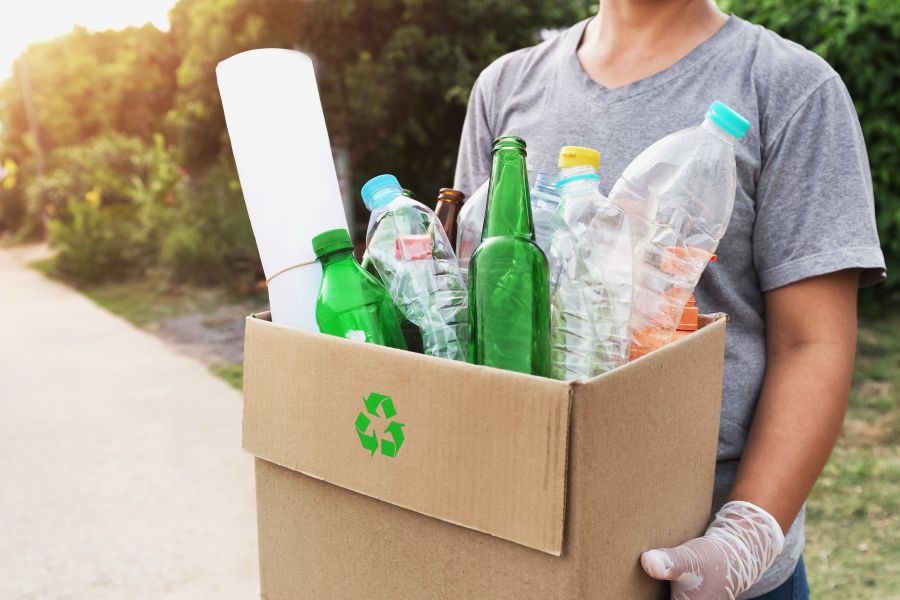UK pEPR scheme administrator PackUK updates recyclability assessment

PackUK, the scheme administrator for the UK’s packaging EPR (pEPR) scheme, has released an updated version of the pEPR Recyclability Assessment Methodology (RAM) — RAM v1.1.
RAM v1.1 aims to assess recycling consistency across packaging producers and materials.
The UK pEPR was set up by Defra in January. We spoke to representatives of the country’s packaging industry about how they are preparing for the legislation.
We discuss the RAM v1.1 updates with Ecosurety, an environmental consultancy part of the PackUK steering committee.
“The latest version of the RAM removes several data collection requirements from the original publication and clarifies some definitions,” Robbie Staniforth, Innovation and Policy director at Ecosurety, tells Packaging Insights.
The RAM v1.1 changes include:
• Modification of the definition of fiber-based composite packaging.
• The presence of retained residue on paper/board packaging — which previously triggered a red rating — has been removed as a condition.
• Labels covering more than 40% of the surface area of a plastic bottle are no longer a condition in the methodology.
Staniforth says that the feedback from industry stakeholders did “realistically” influence the changes made from RAM v1.0 to RAM v1.1. “They made changes to the RAM to simplify it, as a result of feedback to the RAM published in December 2024.”
“Rigid plastic and paper/board are the materials which saw the most significant changes in this update.”
PackUK carried out a RAM simplification sprint in February to reduce the complexity of the RAM and increase producers’ ability to fully complete RAM assessments this year.
Recycling assessments
 Robbie Staniforth, Innovation and Policy director at Ecosurety (Image credit: Ecosurety).Staniforth discusses how RAM v1.1 ensures consistency in recyclability across different packaging producers and types of materials.
Robbie Staniforth, Innovation and Policy director at Ecosurety (Image credit: Ecosurety).Staniforth discusses how RAM v1.1 ensures consistency in recyclability across different packaging producers and types of materials.
“The RAM will need to be applied by all large producers to determine recyclability at a component level, and in turn understand, how much of their household primary packaging is widely recyclable (green), somewhat recyclable (amber) or not recyclable (red),” he explains.
“By having all large producers apply consistent methodology, it ensures everyone is aware of features of packaging which would cause it to be not recyclable, and having waste management fees eco-modulated based on this assessment in future years will likely prompt movement away from packaging which is not recyclable to reduce costs.”
He says the RAM is consistent between materials as each goes through the same stages: classification, collection, sortation, reprocessing, and application.
Business preparedness
PackUK’s upcoming deadline for the first reporting is this October. Staniforth says that the level of readiness to meet the new requirements varies “greatly” between companies.
According to PackUK, only large producers, referred to as “large organizations” including online marketplaces, must report their recyclability assessment data.
“Some have limited product ranges so they don’t have much packaging to assess, making the October deadline achievable. Others have many different products, but their packaging is broadly similar, so it is relatively simple,” he describes.
“For example, when it comes to household packaging, many brewers can quickly assess the recyclability of an aluminum can or glass bottle. They’re likely to spend most of their time considering the various outer packaging they use.”
“At the other end of the spectrum, most retailers have a huge number of suppliers to liaise with to understand recyclability across thousands of products. This makes applying the methodology across most of their products a significant challenge, given the late release of this information.”
Data gaps remain
 RAM v1.1 changes the definition of fiber-based composite packaging.Staniforth says that packaging retailers may face challenges in accessing the necessary data from suppliers. “We are working closely with large retailers and their suppliers, so our intuitive systems collect the necessary information.”
RAM v1.1 changes the definition of fiber-based composite packaging.Staniforth says that packaging retailers may face challenges in accessing the necessary data from suppliers. “We are working closely with large retailers and their suppliers, so our intuitive systems collect the necessary information.”
“Fortunately, we have designed our service to make applying the government’s methodology as simple as possible for any type of producer. Some months ago, we mapped out all the various factors needed to rate any item of packaging.”
He says this process was straightforward for some materials, while for others, like plastic, “it took meticulous and creative thinking.”
“Having started so early, we only needed to make a few minor tweaks to reflect the government’s update.”
A Packaging Innovations 2025, Ecosurety told us how the pEPR drives the industry to adopt more sustainable practices.











